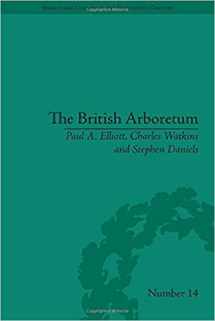
The British Arboretum: Trees, Science and Culture in the Nineteenth Century (Sci & Culture in the Nineteenth Century, 87)
ISBN-13:
9780822944898
ISBN-10:
0822944898
Edition:
1
Author:
Charles Watkins, Stephen Daniels, Paul A. Elliott
Publication date:
2011
Publisher:
University of Pittsburgh Press
Format:
Paperback
320 pages
FREE US shipping
Book details
ISBN-13:
9780822944898
ISBN-10:
0822944898
Edition:
1
Author:
Charles Watkins, Stephen Daniels, Paul A. Elliott
Publication date:
2011
Publisher:
University of Pittsburgh Press
Format:
Paperback
320 pages
Summary
The British Arboretum: Trees, Science and Culture in the Nineteenth Century (Sci & Culture in the Nineteenth Century, 87) (ISBN-13: 9780822944898 and ISBN-10: 0822944898), written by authors
Charles Watkins, Stephen Daniels, Paul A. Elliott, was published by University of Pittsburgh Press in 2011.
With an overall rating of 3.8 stars, it's a notable title among other
books. You can easily purchase or rent The British Arboretum: Trees, Science and Culture in the Nineteenth Century (Sci & Culture in the Nineteenth Century, 87) (Paperback) from BooksRun,
along with many other new and used
books
and textbooks.
And, if you're looking to sell your copy, our current buyback offer is $0.3.
Description
This study explores the science and culture of nineteenth-century British arboretums, or tree collections. The development of arboretums was fostered by a variety of factors, each of which is explored in detail: global trade and exploration, the popularity of collecting, the significance to the British economy and society, developments in Enlightenment science, changes in landscape gardening aesthetics and agricultural and horticultural improvement. Arboretums were idealized as microcosms of nature, miniature encapsulations of the globe and as living museums. This book critically examines different kinds of arboretum in order to understand the changing practical, scientific, aesthetic and pedagogical principles that underpinned their design, display and the way in which they were viewed. It is the first study of its kind and fills a gap in the literature on Victorian science and culture.


We would LOVE it if you could help us and other readers by reviewing the book
Book review

Congratulations! We have received your book review.
{user}
{createdAt}
by {truncated_author}


